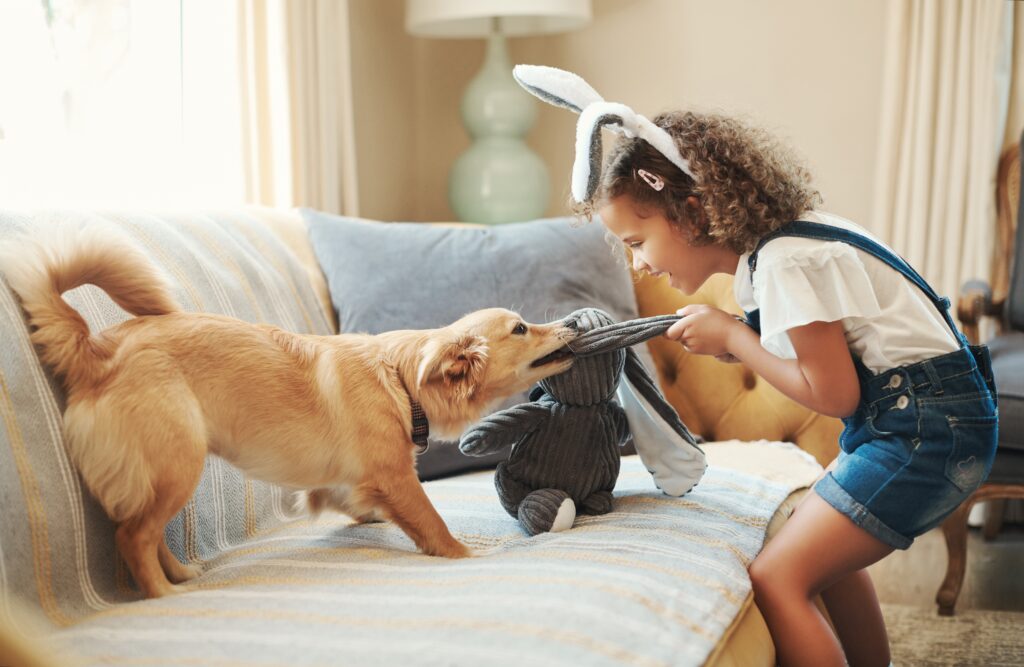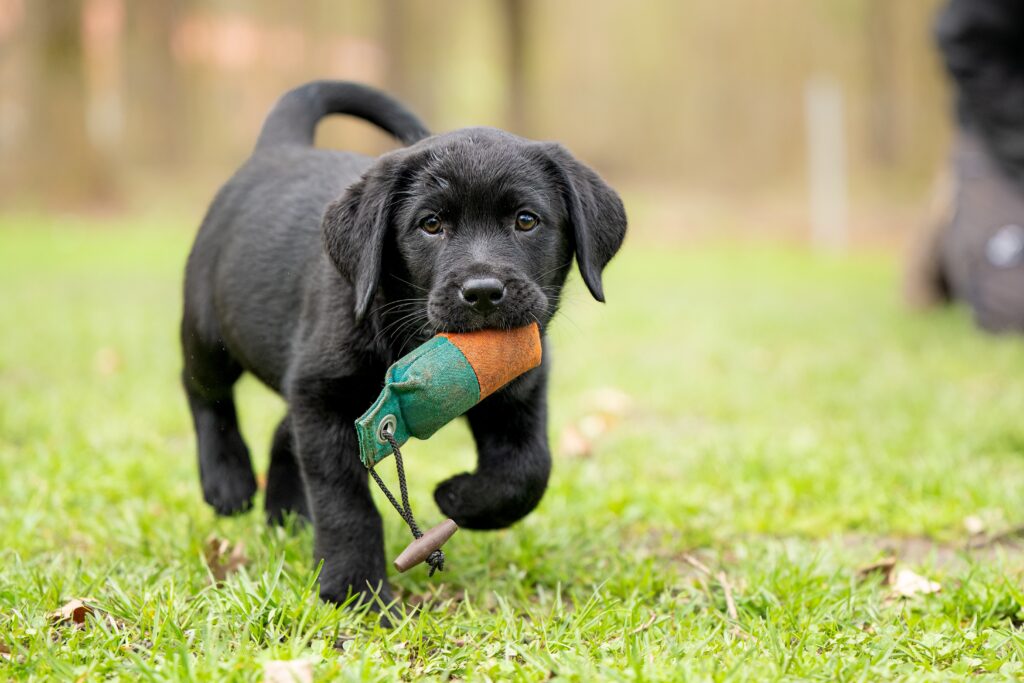Assessing a puppy’s temperament is an essential step in finding the right match for your lifestyle and ensuring they will grow into a well-adjusted adult dog. Temperament assessments can give you a general sense of a puppy’s personality traits, such as confidence, sociability, energy levels, and adaptability.
Here’s how you can assess a puppy’s temperament…
Observe the Litter
- Behavior with Littermates- Watch how the puppy interacts with their littermates. Are they dominant, submissive, playful, shy, or neutral? Puppies that are overly aggressive or constantly bullied by others might need extra care and training.
- Social Hierarchy- The middle-ranking puppies often make excellent family pets because they tend to have balanced personalities compared to overly dominant or overly shy puppies.
Check Response to New People
- Friendly or Aloof- A well-socialized puppy should show interest in new people and approach you willingly after a little time. They might wag their tail or engage in play, which shows confidence and curiosity.
- Timid or Fearful- If a puppy hides, avoids contact, or seems very nervous, it might indicate a shy temperament. This puppy may require patience and extensive socialization to build confidence.
Assess Handling Comfort
- Hold and Gently Restrain- Pick up the puppy, cradle them on their back, and see how they respond. A confident, calm puppy will relax or struggle briefly before settling. Excessive squirming, growling, or fearfulness might indicate discomfort with handling, which may need extra training and positive reinforcement.
- Touch Tolerance- Gently touch their paws, ears, and mouth to gauge their comfort with being handled in ways that will be necessary for grooming and veterinary care.
Response to Stimuli
- Noise Sensitivity- Make a soft noise (e.g., clap your hands or drop a soft object) and observe the puppy’s reaction. A confident puppy might investigate, while an overly timid one could run away or cower. Moderate caution followed by curiosity is a balanced response.
- New Environments- Introduce the puppy to a new area or room. Confident puppies will explore curiously, while more reserved ones may need encouragement.
Test Energy Levels
- Play Interaction- Engage the puppy with a toy or by clapping your hands. Are they eager to play or uninterested? High-energy puppies might constantly want to interact, while low-energy ones may prefer to relax and observe.
- Activity Needs- Consider how much exercise and stimulation the puppy might need. Choose a puppy whose energy levels align with your lifestyle.
Evaluate Independence
- Reaction to Being Alone- Take the puppy to a quieter area, away from their littermates, for a short period. Watch how they handle being by themselves. A puppy that quickly engages with you or explores independently is likely confident, while one that cries or appears overly dependent may need extra help with separation training.
Assess Trainability
- Focus- Show the puppy a small treat or toy, then see if they follow it with their eyes or nose. Puppies that are easily motivated by toys or food may be more trainable.
- Reaction to Commands- Use simple cues like “come” or “sit” and see if the puppy responds. While it’s unrealistic to expect immediate obedience, a puppy that shows engagement and willingness to interact has good potential for training.
Interaction with Other Dogs
- Observing Behavior- If possible, see how the puppy reacts to adult dogs (under safe, controlled conditions). A confident puppy may engage playfully, while a timid puppy might avoid interaction. Watch for signs of aggression or excessive fear.
Health and Stress Levels
- Physical Well-being- Puppies with calm, stable temperaments are more likely to appear healthy and energetic. Puppies under significant stress may appear lethargic or overly nervous.
- Sleeping Patterns- Puppies that easily settle for naps after play or meals often have balanced temperaments.
Use Professional Assessments
- Volhard Puppy Aptitude Test- This widely used assessment evaluates a puppy’s responses to different situations, including handling, retrieving, social attraction, and more.
- Work with a Trainer or Veterinarian- A professional can offer a more detailed temperament analysis if you’re unsure.
Things to Keep in Mind
- Puppy Temperament Can Change- A puppy’s personality is influenced by both genetics and early experiences. Continued training, socialization, and care will shape their behavior as they mature.
- Match the Puppy to Your Lifestyle- Choose a puppy whose temperament fits your energy level, family situation, and daily routine.
- Individual Differences- Puppies from the same litter can have vastly different personalities, so evaluate each one individually.
By following these steps, you can choose a puppy whose temperament matches your home and lifestyle, setting you both up for a happy, successful relationship.


